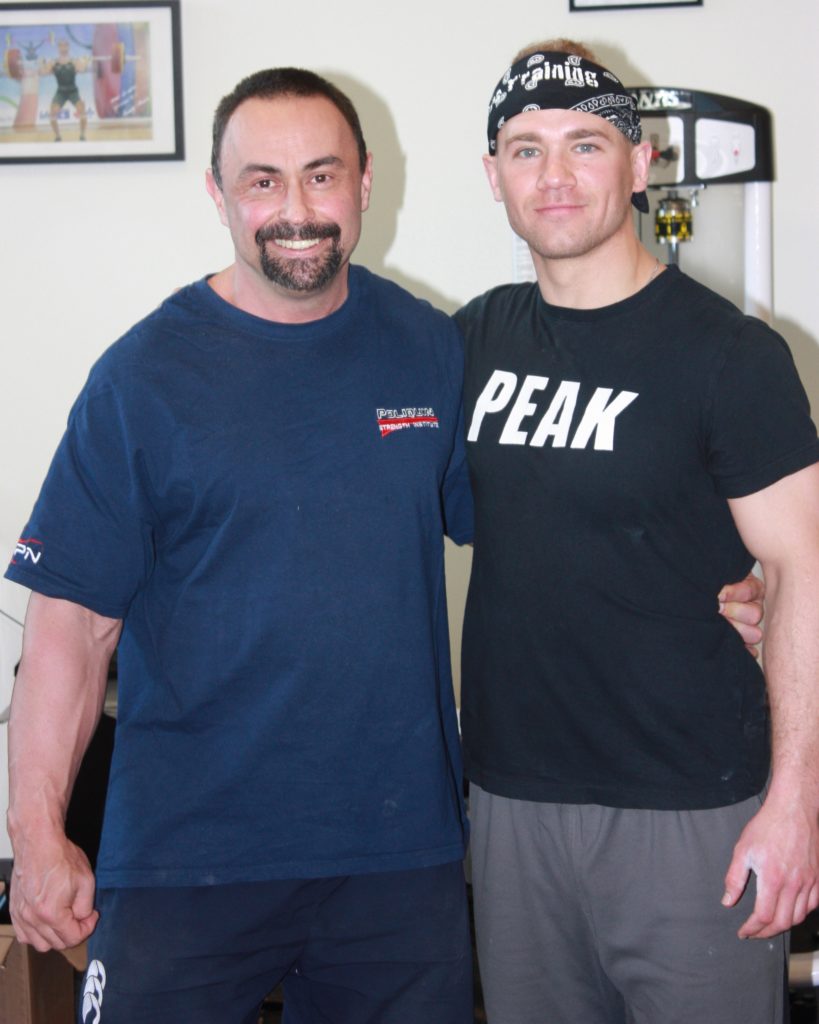Goal: To use principles originally developed in the Soviet Bloc during the Cold War to naturally increase growth hormone and lose body fat while gaining strength and lean mass.
Necessary Equipment: Traditional Gym Equipment – Bench, Rack, Barbell, Cable Stack, Pullup Bar, Bands, Trap Bar, Leg Press, Ab Cart.
Workout per week: 3
Gym Membership Required? Yes. Or a well stocked home gym with the equipment listed above.
Length: 6 weeks
The Origin Story
The principles of German Body Comp Training originated like a diabolical villain – in the Soviet Union during the Cold War. A sports scientist by the name of Hala Rambie, who would eventually defect to West Germany, was studying the Soviet Bloc’s favorite subject – Human Growth Hormone. He discovered that higher blood lactate levels decreased blood pH which in turn increased the production of Growth Hormone (GH). Higher GH lead to greater fat loss.
Fast forward a few decades and hall of fame strength scholar and professor William Kraemer developed specific training protocols around these principles. When blood lactate levels were elevated, more GH was produced. The uptick in GH helped his athletes add lean mass while dropping body fat.
In the 90’s, legendary strength coach Charles Poliquin (who was a mentor of mine) spread the gospel of this style of training and made German Body Comp the cornerstone of recomposition training.

Key Pillars of German Body Comp Training
- Primarily compound lifts
- Upper / lower (with the occasional non-competing) superset
- Moderate to high rep range
- Moderate to short rest periods (depending on athletes training age and level of conditioning)
- Monitored tempo to keep time under tension high
Major Benefits
Time efficient – because the program consists of upper/lower supersets done with minimal rest, one muscle group works while another rests. This makes you progress rich when time is poor.
EPOC (Excess Post-Exercise Oxygen Consumption) – Also known as “the afterburn.” These sessions are intense which leads to metabolic disturbance, forcing your body to work hard even after the session is done. This has been shown to last for up to 72 hours and can account for hundreds of additional calories burned.
3 workouts per week – GBC is an excellent training protocol for people who can’t (or don’t want to) train everyday.
Increase GH – The protocol was literally developed to increasing GH levels, which leads to fat lost and muscle gained.
Post workout euphoria – The endorphin rush is truly delightful. Because of the metabolic byproducts of this style of training, you’ll end up feeling similar to the “runners high” you get after a tough cardio session.
A note about Tempo
Monitored tempo is a key component of GBC training and so tempo is provided for each exercise. If this is the first time you’ve seen a tempo prescription, the first number is the eccentric count. The eccentric portion of the lift is when the muscle belly is getting longer, which is usually the “down” portion. The second number is the pause when the muscle is in its lengthened position (on stretch.) The third number is the concentric portion of the lift – this is when the muscle belly is getting shorter, which is usually the “up” portion (X means explosive or as fast as possible). The final number is the pause after the concentric portion of the lift when the muscle is in its shortened position. I realize this may seem overwhelming but it makes more sense in a practical application. Let’s take the 40X0 tempo as an example for the bench press – we’ll take 4 seconds on the way down, no pause at the bottom (so the bar just taps your chest), press the bar explosively up as fast as possible and take no pause at the top. See? Simple.
A unique component of this specific GBC protocol is the use of single leg training for the lower body exercises in the A block, which I personally have found to be very successful.
Let’s take a look at our weekly training calendar and a breakdown of our workouts.


